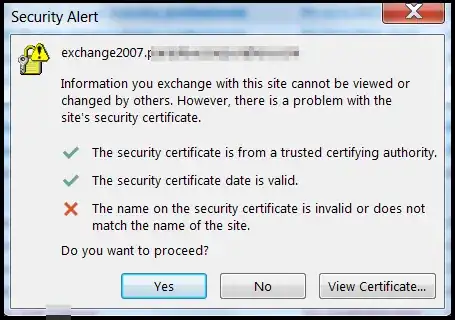I just finished moving mailboxes last night to a second Exchange 2007 server I built (moving from physical to virtual). Clients are pointed to the new server. Getting ready to remove the old server from my domain.
We have an SSL certificate for OWA that I purchased and have used on the old server (on the default website in IIS) that is used to secure traffic on OWA and for our mobile devices. I imported that certificate into the new server's Default Web Site hoping to secure owa and mobile devices again. It's working great for owa and mobile devices but ever since I did my Outlook clients get an error popup occasionally.
I know its because the certificate is for our external address (mail.domain.com, we use this for owa and mobile device connection) and the FQDN of the server is different (exchange2007.domain.com). I think this is caused because the new exchange2007 server is using the certificate I purchased and imported into IIS, instead of using the Self Signed certificate that has the same FQDN. I'm just not sure how to tell Exchange (not OWA or Default Website in IIS) to use the self signed cert. I never had this issue with the old server.
So how can I tell Exchange to use the Self Signed certificate for Outlook clients connected directly?
